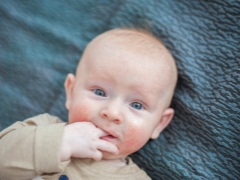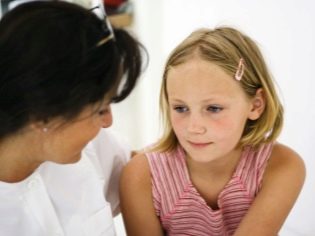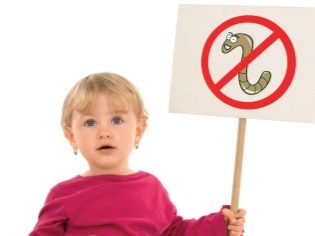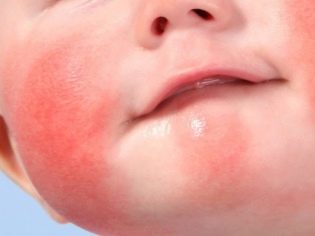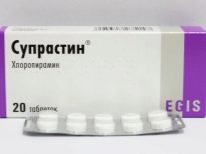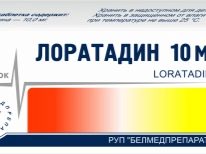Neurodermatitis in children
In children's practice, there are a large variety of skin diseases. Neurodermatitis is one of the most severe pathologies requiring compulsory treatment.
What is it?
Pathological skin reactions to a variety of provocative factors are called neurodermatitis. The development of the disease is directly related to disorders in the immune system. Quite often, atopic dermatitis is combined with other pathologies: bronchial asthma, atopic dermatitis and allergic eczema.
In childhood, the most characteristic diffuse or common forms of the disease. Usually the disease in children has a chronic course. Periods of relative well-being can be replaced by exacerbations, during which the child’s well-being is severely disturbed and uncomfortable symptoms of the disease appear. The first manifestations of the disease can occur even in infants. Doctors note that the clinical signs of neurodermatitis occur in babies as early as two months after birth.
According to statistics, neurodermatitis account for about 45% of all dermatological diseases found in children. Scientists note that the incidence of such inflammatory skin diseases is only increasing every year.
Toddlers living in large and especially industrial cities suffer from neurodermatitis more often than their rural peers. During neurodermatitis, it is not only the skin that is affected. The child also has a breakdown in the immune system and many internal organs.
The reasons
Various factors can lead to the development of the disease. Some scientists believe that the disease begins to form in the period of intrauterine development. It is at this time that the laying of all vital organs including the immune system.
Any impact on the future fetus during pregnancy, the mother leads to the fact that in the future the baby can develop atopic dermatitis.
The main reasons for the appearance of the disease in a child include:
- Psychosomatics. The impaired work of the nervous system contributes to the appearance on the skin of a child of various lesions characteristic of this disease. This leaves a significant imprint on the child's behavior. He becomes more nervous, withdrawn. Often, children with atopic dermatitis do not even make contact with close people.
- Genetic predisposition. In families where cases of neurodermatitis have occurred, the incidence is several times higher. Also, if one of the parents has allergic pathologies, the risk of neurodermatitis in a baby increases several times.
- Exposure to allergenic factors. These include: pollen of various plants and herbs, down and animal fur, household mites, some foods, synthetic materials, chemical aerosols, medicines, and others. For the development of the disease is also important individual hypersensitivity to a particular allergen. Once in the children's body, the allergenic component causes a strong allergic reaction, which provokes the appearance of specific skin rashes on the skin.
- Long or excessive psycho-emotional stress. In childhood, the psyche of the child is still quite labile. The nervous system of the baby is not quite the same as in adults and does not function in full. A strong psycho-emotional shock contributes to the appearance of adverse manifestations of neurodermatitis in a child.
- Chronic diseases of the gastrointestinal tract. Especially often various pathologies lead to the development of neurodermatitis, accompanied by impaired absorption and absorption of nutrients and vitamins. Insufficient intake of vital components leads to a decrease in the work of the immune and nervous system. Such exhaustion contributes to the further development of the signs of neurodermatitis in the baby.
- Various parasite infestations. In pediatric practice, various helminthic diseases contribute to this. In the course of their vital activity, helminths emit a large amount of toxic substances. They have a negative effect on the entire children's body, gradually poisoning it. Prolonged helminthic invasion helps to reduce the immunity of the child and may lead to the appearance of signs of neurodermatitis.
- The consequences of frequent infectious diseases. Often sick with bacterial and viral infections, babies, according to statistics, have a greater risk of becoming ill with atopic dermatitis. This is due to the fact that during any infectious pathology, immunity is significantly reduced. A prolonged and severe infection can lead to the fact that a child, especially one with a tendency to various allergic reactions, develops neurodermatitis.
Clinical options
Given the preferential localization, scientists identify several types of neurodermatitis in children. Each of these forms requires the appointment of appropriate treatment. The severity of symptoms depends on various conditions, including the age of the child and the characteristics of his physical development.
Doctors distinguish several clinical variants of the disease:
- Limited or local. In this case, the pathological eruptions are mainly localized in some one, less often two adjacent anatomical zones. They can occur almost everywhere: on the hands, on the face, neck, back, arms and legs.
- Diffuse. This option is characterized by the appearance of skin rash on different parts of the body of the child.
- Linear. It is characterized by the presence of specific skin changes mainly on the arms or legs of a small patient.
- Follicular Skin rashes occur more in the scalp, in places of hair growth.
- Hypertrophic. Pathological skin rashes cover mainly the entire groin area.
- Psoriasiform. Skin rashes affect the skin of the face and scalp.
Symptoms
Suspected disease can be at home on their own. Against the background of the previous complete well-being, the child has many adverse symptoms on the skin. These clinical signs can be expressed in different ways. Usually in young children, they are even less pronounced than in adolescents. According to statistics, the severe course of the disease occurs at the age of 12-14 years.
The following symptoms are characteristic of neurodermatitis:
- The appearance of red spots. They can be of different diameter and shape. Often the contour of such skin rashes is uneven. They differ markedly in color from healthy skin. In some cases, instead of spots on the skin, numerous bubbles appear that have serous fluid inside.
- Severe itching. Perhaps this is the main and most pronounced symptom of the disease. Itching for neurodermatitis is simply intolerable. This brings pronounced discomfort to the baby and significantly impairs his well-being. A sick child constantly scratches the itchy skin, which contributes to the fact that a secondary infection gets into the wounds and suppuration begins.
- Deterioration of well-being. Severe itching significantly disrupts the child’s behavior. Kids eat less, their sleep is disturbed. Ordinary favorite activities do not cause the child former delight and do not bring him satisfaction. In some cases, the well-being of the baby worsens the appearance of headaches and fever.
- Severe dryness and peeling of the skin. This symptom is more pronounced on the inflamed areas of the skin. When viewed on the skin can detect various longitudinal and transverse grooves and lines. Severe flaking on the scalp leads to severe dandruff.
Diagnostics
If you detect the first signs of disease, be sure to show the child to the doctor. In some cases, atopic dermatitis occurs under the guise of other dermatological diseases. To establish the correct diagnosis should conduct an additional diagnosis.
Neurodermatitis is an exception pathology. In order to establish such a diagnosis, the doctor must exclude all other skin inflammatory diseases in the baby, with the development of which there are similar clinical symptoms.
Treatment
Treat atopic dermatitis should be immediately, as soon as adverse symptoms appeared. Therapy of this pathology includes the appointment of various groups of drugs. The choice of treatment tactics remains for the attending physician. In some cases, when atopic dermatitis has developed as a result of chronic diseases of internal organs, the removal of the underlying cause is first required. In this case, timely treatment of exacerbations of the pathologies present in the child will lead to the fact that all the adverse effects on the skin will disappear on their own.
For the treatment of neurodermatitis are used:
- Hypoallergenic Diet. Such medical nutrition completely excludes any products with high allergenic properties. From the children's menu are completely excluded: chocolate, seafood, citrus fruits, bee products, tropical fruits and berries.
Follow a diet should be throughout life. This will help further prevent possible relapses.
- Drug therapy. To eliminate the pronounced pruritus various antihistamines are used. Dosage, frequency and duration of use is chosen by the attending physician. Suprastin, Claritin, Loratadine and other means will help reduce itching on the skin and improve the child's well-being. Typically, these drugs are prescribed in the acute period of the disease to eliminate the symptoms, and can also be taken to prevent future seasonal exacerbations.
- Adjuvant therapy and products containing biologically active ingredients. Helps eliminate adverse symptoms and improve the condition of the child. The various biologically active substances that make up the Tianshi preparations have a pronounced effect.
- Daily regime. For babies with neurodermatitis, regular rest and good sleep are very important. To work properly, the nervous system requires a night's sleep of at least 8-9 hours. Children of earlier age should sleep a little more. Daytime sleep must also be present in the day regimen of a child suffering from atopic dermatitis.
Prevention
To reduce the risk of neurodermatitis, you can use the proper organization of the regime of the day. A balanced diet that contains all the nutrients and vitamins necessary for the growth and development of the baby is necessary for the normal functioning of the child's body. Strengthening immunity plays an important role in the prevention of neurodermatitis. Exercise, daily walks in the fresh air, stress reduction will help the immune system to work quite effectively and smoothly.
Strong immunity and excellent work of the nervous system significantly reduce the possibility of adverse symptoms of neurodermatitis at any age.
For more information about the treatment and prevention of neurodermatitis in children, see the following video.
